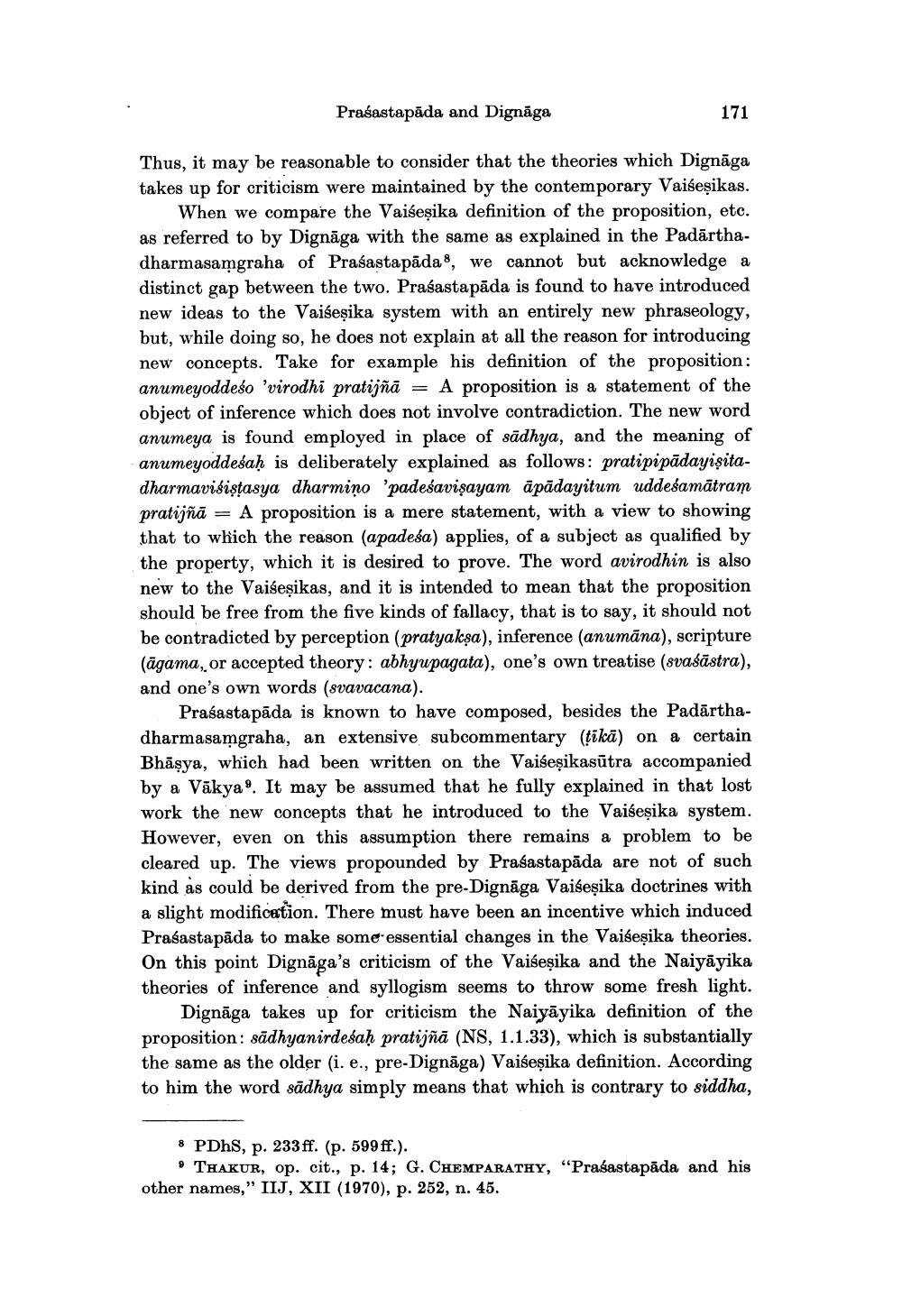Book Title: Note On Development Of Vaisesika Theory Of Anumana Author(s): Masaaki Hattori Publisher: Masaaki Hattori View full book textPage 3
________________ Prasastapāda and Dignāga 171 Thus, it may be reasonable to consider that the theories which Dignāga takes up for criticism were maintained by the contemporary Vaišeşikas. When we compare the Vaiseșika definition of the proposition, etc. as referred to by Dignāga with the same as explained in the Padārthadharmasamgraha of Prasastapāda, we cannot but acknowledge a distinct gap between the two. Prasastapāda is found to have introduced new ideas to the Vaišeşika system with an entirely new phraseology, but, while doing so, he does not explain at all the reason for introducing new concepts. Take for example his definition of the proposition: anumeyoddeso 'virodhi pratijñā = A proposition is a statement of the object of inference which does not involve contradiction. The new word anumeya is found employed in place of sādhya, and the meaning of anumeyoddesaḥ is deliberately explained as follows: pratipipādayişitadharmavisistasya dharmiņo 'padeśavişayam āpādayitum uddešamātram pratijñā = A proposition is a mere statement, with a view to showing that to which the reason (apadeśa) applies, of a subject as qualified by the property, which it is desired to prove. The word avirodhin is also new to the Vaiseşikas, and it is intended to mean that the proposition should be free from the five kinds of fallacy, that is to say, it should not be contradicted by perception (pratyakşa), inference (anumāna), scripture (āgama, or accepted theory: abhyupagata), one's own treatise (svaśāstra), and one's own words (svavacana). Prasastapāda is known to have composed, besides the Padārthadharmasamgraha, an extensive subcommentary (tikā) on a certain Bhāșya, which had been written on the Vaišeşikasūtra accompanied by a Vākya'. It may be assumed that he fully explained in that lost work the 'new concepts that he introduced to the Vaiseșika system. However, even on this assumption there remains a problem to be cleared up. The views propounded by Prasastapāda are not of such kind as could be derived from the pre-Dignāga Vaiseșika doctrines with a slight modification. There must have been an incentive which induced Prasastapāda to make some essential changes in the Vaiseșika theories. On this point Dignāga's criticism of the Vaišeșika and the Naiyāyika theories of inference and syllogism seems to throw some fresh light. Dignāga takes up for criticism the Naiyāyika definition of the proposition: sädhyanirdesaḥ pratijñā (NS, 1.1.33), which is substantially the same as the older (i. e., pre-Dignāga) Vaiseșika definition. According to him the word sādhya simply means that which is contrary to siddha, 8 PDhs, p. 233ff. (p. 599 ff.). 9 THAKUR, op. cit., p. 14; G. CHEMPARATHY, "Prasastapāda and his other names," IIJ, XII (1970), p. 252, n. 45.Page Navigation
1 2 3 4 5 6 7 8 9 10 11 12
